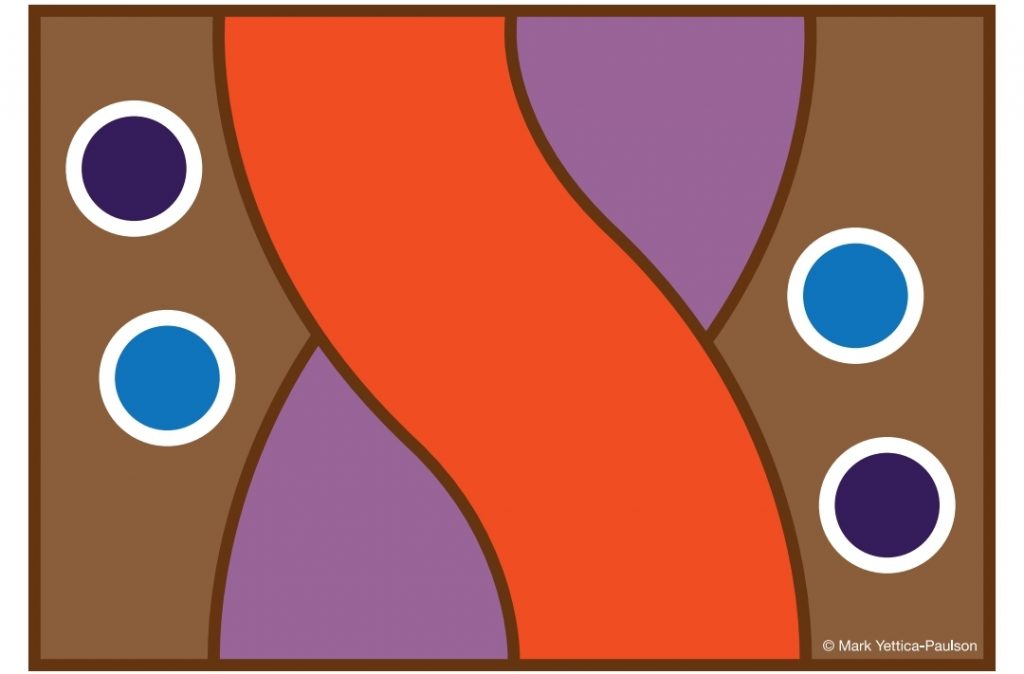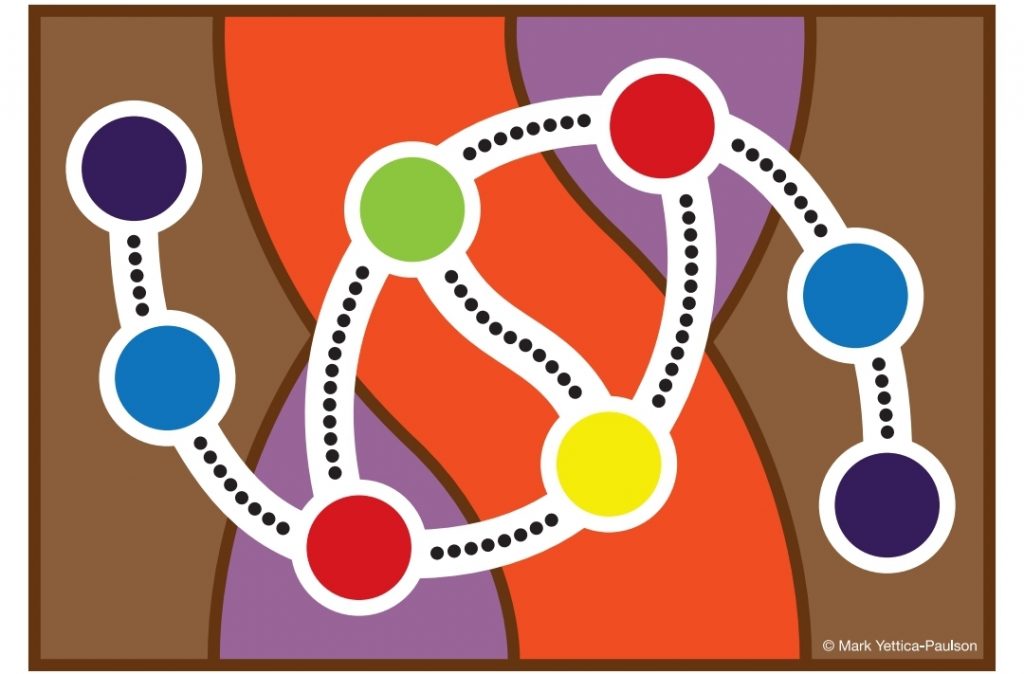“In the Deep Purple Space we are all ancient peoples. This is where our culture can form mental models for the world around us. From here we can derive a deep sense of belonging.”

Ancient peoples
We all have ancestors. We didn’t just turn up. We all have peoples that go back to the beginning. We each carry an understanding of what that means, including the cultures we come from. There are, of course, those of us who don’t know our parents or have been impacted by external and internal forces that have caused a rupture and break in their ancestral story. Even though we may not remember all of our ancestral stories, they are there and they inform who we are.
“The deep purple space serves as a reminder that there must have been people before me that resulted in my existence.”
In the cases where forces have caused a break in the story, it is important to note that it doesn’t mean that ancestors don’t exist. It means that we have lost access to our ancestral story.

Mental Models – how we make sense of the world around us.
Ancestral stories have culture and identity embedded in them. Every culture will remember what matters for their culture to sustain identity and belonging. Every culture will also have ways to explain the core beliefs and ancient anxieties of humankind like, “who are we, where did we come from, and how did we end up here?”
“In the deep purple space we form our fundamental relationship with the world around us and all of the cosmos.”
Our relationship with the Deep purple space connects us to the stories about the start of everything and the reason we need to keep life going.

Deep Sense of Belonging
These ancestral stories sustain our identity and belonging. Through our relationship to the stories we can develop a deep sense of belonging.
“Our connection to ancestral stories or elements of the stories can impact on our sense of belonging.”
For example, you might have a vague memory of a myth from Norse or Greek mythology and it relates to some of your relatives who are European. The story is connected to you, but you may not know all the details and don’t really interact with the story on a regular basis. A contrasting story could be a First Nations person who connects with a story that brings identity and meaning on a regular basis. They would have been taught the story so it is a clear memory. They would have also been taught the songs and ceremonies connected to the story so it is remembered, sustained and practised daily. Furthermore, they are capable of living in the modern world and exercising their relationship to the ancestral story by practising culture on their homeland. There are many other examples around us of how cultures are able to remain connected and form a deep sense of identity with their ancestral stories. Take some time to identify the various ways we embed and nurture ancient cultural practice in our everyday life.
I encourage you to think about who you can talk to and where you can search to learn more about the ancestral stories from your purple space.
Next in the Intercultural Framework is the Blue Space of Cultural Practice.
Peace and Power
Mark






